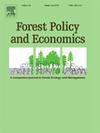慢性消耗性疾病对狩猎租赁价格影响的享乐分析
IF 3.8
2区 农林科学
Q1 ECONOMICS
引用次数: 0
摘要
健康的狩猎动物群对于维持租赁狩猎至关重要,这是美国许多森林土地所有者的重要收入来源。然而,该县东南地区鹿群中出现的慢性消耗性疾病(CWD)增加了租赁狩猎可行性和猎鹿人福利的不确定性。由于不知道CWD是否以及如何影响狩猎租赁价值,我们采用狩猎租赁价格的享乐模型和租赁物业的特征以及CWD的存在来评估CWD对租赁价格的外部性。虽然CWD对附近的物业没有显著影响,但CWD对该物业收获的鹿的影响与年租赁价格每英亩减少1.84美元(即22%)有关。研究结果为CWD在土地所有者收入损失和猎人福利方面的经济影响提供了新的见解。将这一隐含价格与受CWD影响的估计猎人数量和面积相结合,表明该地区的影响可能是巨大的,在目前的流行率下,CWD地区的经济产出损失估计为15.3万美元,而在假设的完全覆盖情况下,两个州的经济产出损失高达1062万美元。尽管本研究提出了鹿狩猎中CWD的一个案例,但研究结果将有助于理解狩猎健康对狩猎租赁需求、收入征收的影响,以及对区域经济的相应影响,以及指导改善狩猎种群健康的投资。本文章由计算机程序翻译,如有差异,请以英文原文为准。
A hedonic analysis of chronic wasting disease's effect on hunting lease prices
Healthy herds of game animals are critical in sustaining lease hunting, which is a significant source of income for many forest landowners in the U.S. However, the emergence of chronic wasting disease (CWD) in cervid populations of the southeastern region of the county has added uncertainty regarding the viability of lease hunting and the welfare of deer hunters. As it was not known whether and how CWD impacts the value of hunting leases, we employed a hedonic model of hunting lease prices and the characteristics of lease properties along with the presence of CWD to evaluate the externality of CWD on lease prices. While the presence of CWD on nearby properties had no significant effect, the presence of CWD in deer harvested on the property was associated with a $1.84/acre reduction (i.e., 22 %) in annual lease price. Findings provide new insights into the economic effects of CWD in terms of lost landowner income as well as hunter welfare. Aggregation of this implicit price with the estimated number of hunters and acreage affected due to CWD showed that the regional impact could be substantial, with lost economic output estimated to range from $153,000 in the CWD region only under the current prevalence rate to as high as $10.62 million across two states under a presumed full coverage rate scenario. Even though this study presented a case of CWD in deer hunting, findings will be useful in understanding the effects of game health on hunting lease demand, revenue collection, and the corresponding impact on regional economies, as well as for guiding investments in improving the health of the game population.
求助全文
通过发布文献求助,成功后即可免费获取论文全文。
去求助
来源期刊

Forest Policy and Economics
农林科学-林学
CiteScore
9.00
自引率
7.50%
发文量
148
审稿时长
21.9 weeks
期刊介绍:
Forest Policy and Economics is a leading scientific journal that publishes peer-reviewed policy and economics research relating to forests, forested landscapes, forest-related industries, and other forest-relevant land uses. It also welcomes contributions from other social sciences and humanities perspectives that make clear theoretical, conceptual and methodological contributions to the existing state-of-the-art literature on forests and related land use systems. These disciplines include, but are not limited to, sociology, anthropology, human geography, history, jurisprudence, planning, development studies, and psychology research on forests. Forest Policy and Economics is global in scope and publishes multiple article types of high scientific standard. Acceptance for publication is subject to a double-blind peer-review process.
 求助内容:
求助内容: 应助结果提醒方式:
应助结果提醒方式:


